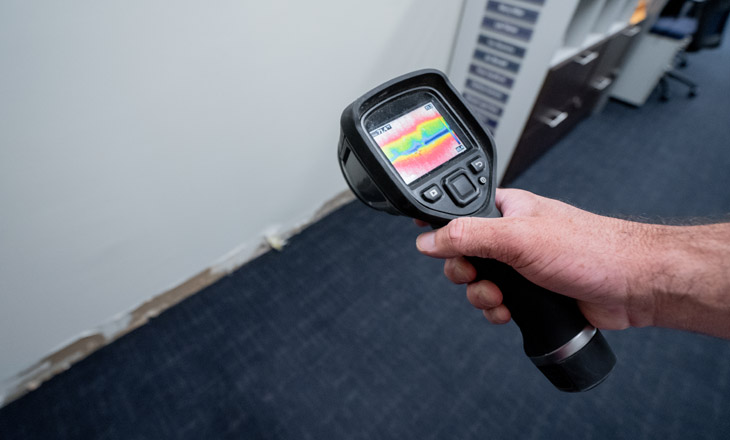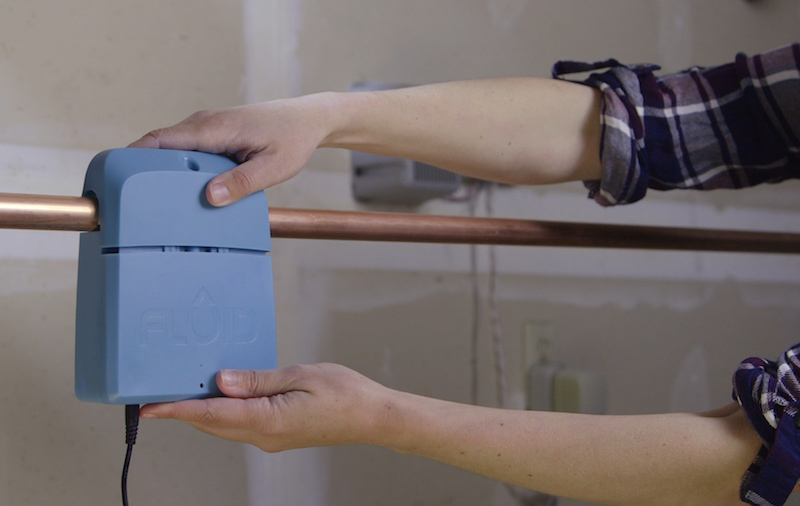Ingenious Solutions for Early Detection of Water Leakages in Buildings and Infrastructure
From innovative leak discovery modern technologies to the deployment of IoT sensors for real-time tracking, the landscape of leakage prevention is advancing rapidly. Automated water flow analysis systems are reshaping how leakages are recognized and attended to, leading the way for a proactive approach to water leakage detection.
Advanced Leakage Detection Technologies
Advanced leak detection modern technologies, outfitted with sophisticated sensing units and algorithms, play a vital function in swiftly identifying and determining water leakages in numerous settings. These technologies employ a combination of acoustic, thermal, and electromagnetic picking up techniques to detect leaks properly. Acoustic sensors detect the audio of getting away water, enabling precise localization of the leakage source. Thermal imaging spots temperature adjustments triggered by water leakage, giving one more effective approach for leak recognition. Electromagnetic sensors can recognize changes in magnetic fields triggered by water, supplying yet one more layer of leakage detection capacity.

IoT Sensors for Real-Time Tracking
In the world of modern-day water leakage detection, the integration of IoT sensors for real-time tracking stands for a crucial innovation in boosting aggressive leakage discovery capabilities. These sensors provide constant tracking of water supply, offering real-time data on water flow rates, pressure variants, and temperature level modifications. By leveraging IoT technology, these sensors can detect also the tiniest anomalies in water use patterns, making it possible for very early recognition of possible leakages prior to they intensify into major issues.
IoT sensors transmit data to a central platform, where sophisticated algorithms analyze the information and generate notifies or notifications when abnormalities are detected. This real-time surveillance capacity permits homeowner or facility supervisors to immediately deal with leaks, reducing water damage, reducing fixing expenses, and preserving water resources.
Furthermore, IoT sensors can be integrated with building management systems, enabling for automatic actions to discovered leakages, such as turning off water valves or turning on pumps to alleviate the impact of leakages. Generally, the implementation of IoT sensing units for real-time tracking considerably boosts the performance and efficiency of water leakage detection in structures and framework.
Artificial Intelligence Algorithms for Leakage Prediction

One key benefit of making use of maker discovering for leak forecast click here for more info is its capability to continuously learn and improve its precision gradually. As more information is gathered and fed into the formula, it can fine-tune its forecasts and adjust to changing problems, eventually enhancing the integrity of leakage detection systems.
In addition, artificial intelligence algorithms can assist in identifying subtle indicators Discover More Here of leaks that might go unnoticed by conventional monitoring techniques. water leak detection. By evaluating intricate data embed in real-time, these algorithms can give early cautions and signals, enabling punctual intervention and precautionary upkeep to reduce possible water damage and connected prices
Utilizing Thermal Imaging for Leakage Discovery
Thermal imaging technology supplies a promising technique for discovering water leaks in various systems and infrastructures. By making use of infrared radiation and temperature level differences, thermal imaging video cameras can identify concealed leaks that are not easily visible to the nude eye.
Among the crucial benefits of thermal imaging for leak discovery is its non-intrusive nature. Unlike conventional techniques that may need burglarizing walls or floorings click over here now to situate leakages, thermal imaging permits non-destructive screening. This not only conserves time and minimizes prices but likewise lessens disruption to the building or infrastructure being assessed. Additionally, thermal imaging can promptly scan huge locations, providing an extensive introduction of prospective leak sources in a timely manner. Overall, making use of thermal imaging innovation improves the efficiency and precision of water leak discovery, making it an important device for keeping the stability of structures and facilities.
Automated Water Flow Analysis Equipments
Exactly how can computerized water flow evaluation systems transform the discovery and administration of leakages in different systems and frameworks? Automated water flow evaluation systems provide an aggressive method to leakage detection by constantly keeping track of water circulation rates and patterns. By establishing standard data, these systems can swiftly recognize variances that may indicate a leak, making it possible for timely intervention to protect against comprehensive damages.
These systems utilize advanced formulas to evaluate real-time data and give prompt notifies when abnormalities are found, permitting for speedy activity to be taken. Additionally, computerized water flow analysis systems can be incorporated with structure management systems or IoT systems, enhancing overall effectiveness and making it possible for remote surveillance capabilities.
Furthermore, the information accumulated by these systems can be used for predictive maintenance functions, assisting to determine prospective weak factors in the facilities before leaks happen. Generally, the application of automated water flow analysis systems can considerably improve leak detection and management practices, inevitably bring about set you back financial savings, minimized water waste, and boosted sustainability in buildings and infrastructure.

Verdict
To conclude, the combination of innovative leakage discovery technologies, IoT sensors, device discovering algorithms, thermal imaging, and automatic water flow analysis systems provides ingenious options for very early discovery of water leakages in structures and framework. These modern technologies make it possible for real-time surveillance, forecast of leakages, and efficient discovery approaches to avoid water damages and waste. Carrying out these options can assist in maintaining the integrity and sustainability of water systems in various setups.